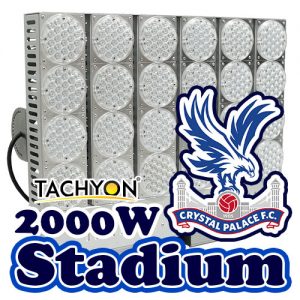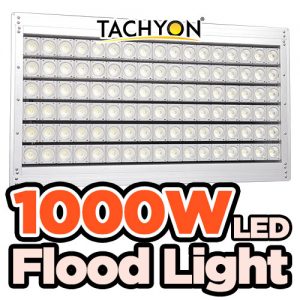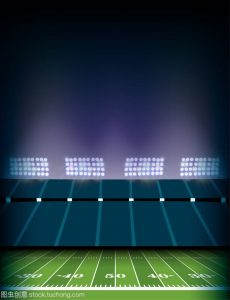Reduce the Cost of LED Lights
LED chips occupy a major part of the cost of LED lamps, so the main way to reduce the cost of LEDs is to reduce the cost of LED chips.
The key to the development of LED chip technology lies in the base material and epitaxial growth technology. The substrate materials have been developed from traditional sapphire materials, silicon and silicon carbide to new materials such as zinc oxide and gallium nitride. In just a few years, with the help of a series of technological improvements including chip structure, surface roughening and multiple quantum well structure design, LED has achieved a huge breakthrough in light efficiency.
The cost of silicon substrates is very low, and the technology is constantly improving, but the current luminous efficiency is not satisfactory. If this speed of development is maintained, once it reaches a high level, it will become an inevitable choice for silicon substrates to become the most important technical solution, and enterprises will also obtain huge economic returns.
Improve the Color Rendering of LED Lights
In high-brightness white LEDs, a small fraction of blue light has a longer wavelength after Stokes shift. This is a good thing, because it allows LED lamp manufacturers to use many different colored phosphor layers, thereby expanding the emission spectrum and effectively increasing the color rendering index (CRI) of the LED.
The high CRI achieved with phosphor-based white LEDs comes at a cost, as the Stokes shift causes the efficiency of white LEDs to be lower than that of monochromatic LEDs. However, for most lighting applications, LED lamps with higher CRI and slightly lower efficiency are preferred.
Improve LED light System Reliability
The overall efficiency, lifetime and reliability of LEDs must be improved through system optimization.
Light source: compact and efficient, choose the right color and output power.
Control and Drive: Use electronic circuits to achieve constant current drive and control of LEDs.
Thermal management: In order to achieve a longer service life, the temperature of the LED node must be controlled. The calculation of the heat dissipation model and the application of new materials and new processes are the hot spots of LED lamp technology.
Optical Components: Lenses, reflectors, or light guide materials focus the light on the target area or spread it around, depending on the design requirements.
Improve the Efficiency of LED Light Power Supply
Whether it is a current-limiting constant-current control power supply or an op-amp-controlled constant-current power supply, the power supply problem must be solved. That is, when the switching power supply chip is working, it needs a relatively stable DC voltage to power it.
The operating current of the chip varies from one mA to several mA. Like the FSD200, NCP1012, and HV9910, this chip is high-voltage self-feeding. It is convenient to use, but the high voltage feed causes the heat of the IC to rise, because the IC has to withstand a DC current of about 300V, as long as there is a little current, even if it is a mA, there will be a loss of 0.3W.
Generally, the LED power supply is only about ten watts, and the loss of a few tenths of watts can reduce the efficiency of the power supply by a few points. A typical QX9910 uses a resistor to pull down power, so that the loss is on the resistor, and it has to lose a few tenths of a watt.
There is also magnetic coupling, which is to use a transformer to add a winding to the main power coil, just like the auxiliary winding of the flyback power supply. This avoids losing those fractions of a watt of power. This is also one of the reasons why a transformer is used without isolating the power supply, which is to increase the efficiency by a few points in order to avoid loss of power.
LED and Environmental Protection
As the problem of global greenhouse gas emissions is becoming more and more serious, approaching the critical point of the earth’s self-regulation, countries have introduced relevant policies, and governments around the world must implement energy conservation and emission reduction (carbon dioxide) without delay. LED lights are currently the most energy-saving green electric light sources, and naturally become the main option for energy-saving and emission-reduction lighting. With the gradual reduction of the cost and price of LED lamps, the speed of their popularity is also accelerating. Before 2030, the market share of LED lamps will exceed 90%.
(1). LED light source has high luminous efficiency
Comparison of luminous efficiency: incandescent light effect is 10-15lm, halogen tungsten light effect is 12-24 lumens/watt, fluorescent lamp 50-90 lumens/watt, sodium lamp 90-140 lumens/watt.
LED light efficiency: It can emit up to 50-200 lumens/watt, and the light emission has good monochromaticity, narrow spectrum, no need to filter, and can directly emit colored visible light.
(2). LED light source consumes less power
LED single tube power is 0.03-0.06 watts, DC drive is adopted, and the single tube driving voltage is 1.5-3.5 volts. The current is 15-18 mA, the response speed is fast, and it can be operated at high frequency. In the case of the same lighting effect, the power consumption is 1/10,000 of the incandescent lamp and 1/2 of the fluorescent tube. A fluorescent lamp with the same effect is more than 40 watts, while the power of each LED is only 18 watts.
(3). The LED light source has a long service life
Incandescent lamps, fluorescent lamps, and tungsten halogen lamps use electronic light field radiation to emit light. The filament is easy to burn, and the thermal deposition and light attenuation are obvious. The LED lamp is small in size, light in weight, and encapsulated in epoxy resin, which can withstand high-strength mechanical shock and vibration. Not easy to break. The average life span is 30,000-50,000 hours. The service life of LED lamps can reach 3-5 years, which can greatly reduce the maintenance cost of lamps and avoid the pain of frequent lamp replacement.
(4). Strong safety and reliability
Low calorific value, no thermal radiation, cold light source, safe to touch. It can precisely control the light type and light-emitting angle. Pure light color, no glare. Does not contain mercury, sodium and other substances that may be harmful to health.
(5) LED light source is beneficial to environmental protection
The LED is a solid-state light-emitting body, which is impact-resistant and not easily broken. Waste can be recycled without pollution. Reduce the production of a large amount of harmful gases such as sulfur dioxide and nitrogen, as well as greenhouse gases such as carbon dioxide. It can improve people’s living environment and can be called “green lighting source”.
There are currently three technologies for producing white LEDs:
The first is to use the principle of three primary colors and the three ultra-high brightness LEDs of red, green and blue that can be produced to be mixed into white according to the ratio of light intensity of 3:1:6.
The second is the use of ultra-high InGan blue LEDs, with a little yttrium-diamond garnet-based phosphor on the tube wall. It can generate yellow-green light under the excitation of blue light, and this yellow-green light can synthesize white light with the transmitted blue light.
The third is the UV LED. Ultraviolet light is used to excite three primary color phosphors or other phosphors to produce white light mixed with multiple colors.






